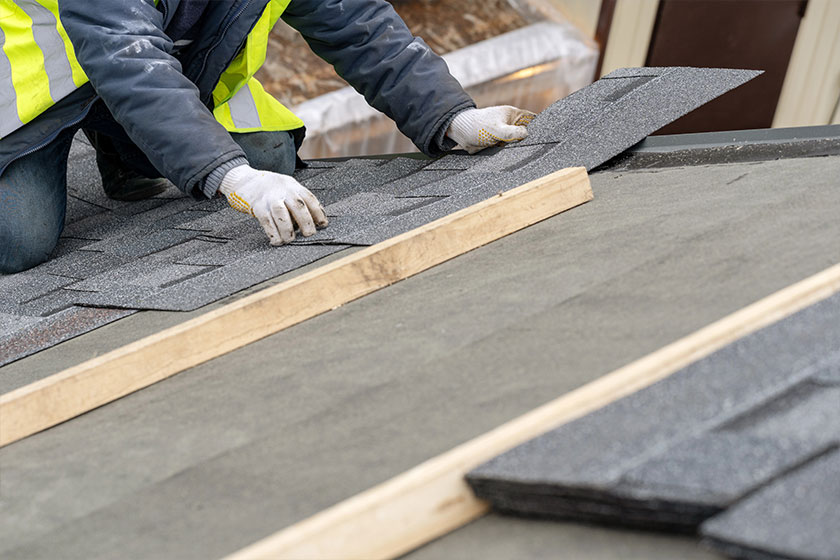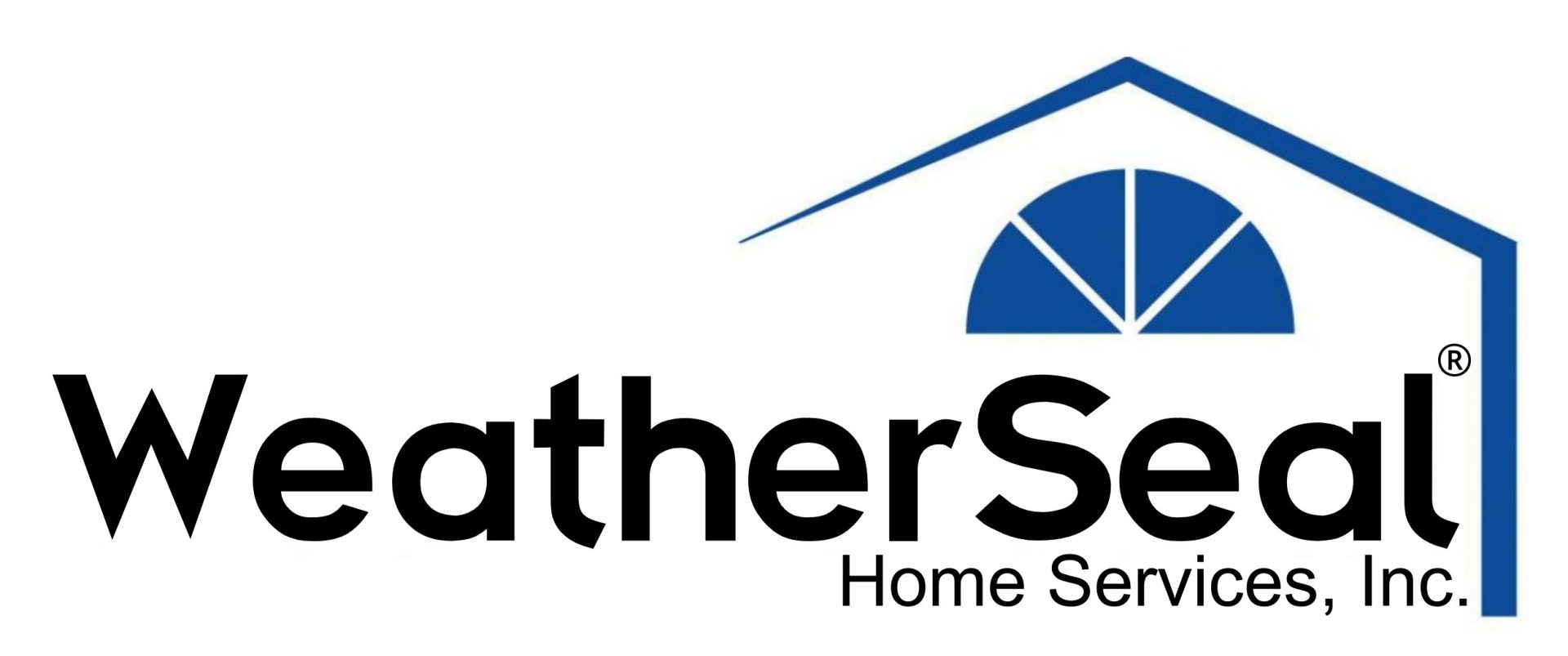Asphalt shingles are among the most popular roofing materials due to their durability, affordability, and aesthetic versatility. Whether you’re a homeowner looking to enhance your property’s value or a contractor working on a residential project, understanding how to install roof shingles is key.
This guide provides a step-by-step overview of the process, from preparation to finishing touches. We make sure that your roof is not only functional but also visually appealing.

Understanding Asphalt Shingles
Before going into installation, it’s important to understand what asphalt shingles are and why they are a preferred choice for roofing. Asphalt shingles are composed of a fiberglass or organic mat base, coated with waterproof asphalt and topped with mineral granules. These layers work together to create a weather-resistant barrier that protects the home from the elements.
Asphalt shingles are available in three main types: three-tab shingles, architectural shingles, and luxury shingles. Three-tab shingles are the most basic and affordable option. Meanwhile, architectural shingles offer enhanced durability and a dimensional appearance. Luxury shingles mimic the look of high-end materials like slate and wood but are more cost-effective and easier to install.
Preparing for Installation
Proper preparation is necessary to achieve a durable and effective roofing installation. Taking the time to prepare assures that the shingles will adhere correctly, provide maximum protection, and maintain the roof’s structural integrity over time. Below is a detailed explanation of the preparation process:
Gathering the Tools and Materials
Before beginning the project, confirm that you have all the necessary tools and materials to avoid delays or interruptions during installation. The essentials include:
- Asphalt shingles: Choose the type and color that suit your home’s style and climate.
- Roofing nails: Opt for corrosion-resistant nails that come with a stronghold.
- Hammer: A durable hammer is required to secure the shingles and other roofing materials.
- Utility knife: This tool will help trim shingles to fit specific areas, such as edges and around roof penetrations.
- Roofing felt (underlayment): This layer adds extra protection against water infiltration.
- Drip edge: Metal flashing to prevent water from seeping under the edges of the roof.
- Chalk line: Assures straight and evenly spaced rows of shingles.
- Roofing shovel or pry bar: Needed for removing old shingles and nails if replacing an existing roof.
- Safety equipment: A sturdy ladder, safety harness, and slip-resistant shoes are key to working safely at heights.
Having everything on hand guarantees a smooth workflow and reduces the risk of mistakes or accidents.
Inspecting the Roof Deck
The roof deck serves as the foundation for the shingles. That’s why it must be in excellent condition before installation. Begin by thoroughly inspecting the roof deck for signs of:
- Check for soft spots, discoloration, or areas where the wood appears weakened. These indicate rot or water damage that must be addressed.
- Secure any loose boards and replace warped ones to create a flat, stable surface.
- Remove old nails, screws, or leftover debris from the previous roofing material.
Addressing Issues on the Roof Deck
If any issues are found during the inspection, take the following steps to make sure the roof deck is ready for installation:
- Remove and replace any sections of the roof deck that show significant rot or structural compromise. Use new, treated plywood or OSB (oriented strand board) for longevity.
- Add extra nails or screws to secure loose sections of the deck and reinforce stability.
- Sweep the roof deck to remove dust, dirt, and small debris. A clean and smooth surface guarantees the roofing felt and shingles adhere properly.
Guaranteeing Proper Ventilation
While inspecting the roof deck, also evaluate the ventilation system. Adequate ventilation is essential to prevent moisture buildup, which can lead to rot and mold. Check for the following:
- Make sure that there are enough vents at the eaves or soffits to allow cool air to enter.
- Verify that ridge or gable vents are clear and functioning to allow hot air to escape.
If ventilation is insufficient, consider adding or upgrading vents before installing the shingles. Proper airflow extends the life of the roof and prevents costly repairs in the future.
Final Preparations
Once the roof deck is ready, measure the roof dimensions to calculate the number of shingles needed. Account for waste by adding an extra 10-15% to your total. Make sure the weather forecast is favorable. Shingles should be installed on a dry roof in moderate temperatures to guarantee proper adhesion and durability.
Taking the time to prepare thoroughly assures a smooth and successful installation process. With a clean, solid roof deck and all the necessary materials and tools in place, you’ll be ready to begin laying the foundation for a long-lasting asphalt shingle roof.
How to Install Roof Shingles
Installing Roof Underlayment
The first step in the installation process is to lay the roof underlayment. Roof underlayment serves as an additional layer of protection against water infiltration. Start at the bottom edge of the roof and roll the underlayment horizontally. Overlap each layer by at least two inches. Secure it with roofing nails, guaranteeing it is flat and free of wrinkles.
When installing underlayment, pay special attention to valleys and edges, where water runoff is most concentrated. Use an adhesive or waterproof membrane in these areas for added protection. Extend the underlayment over the edge of the roof to guarantee full coverage.
Installing the Drip Edge
The drip edge is a metal flashing installed along the edges of the roof to direct water away from the fascia and into the gutters. Begin by attaching the drip edge along the eaves, nailing it to the roof deck at intervals of about 12 inches. Overlap the sections of the drip edge by at least two inches to prevent gaps.
Once the eave edges are complete, move to the rake edges. The rake edges should overlap the eave edges slightly. This will create a continuous barrier against water infiltration. Make sure the drip edge is flush with the edges of the roof and secure it firmly.
Starting the Shingle Installation
The shingle installation process begins at the bottom edge of the roof, typically at the eaves, where a strong foundation is established for the rows that will follow. This initial step is known as the starter course and is key to creating a straight and secure base.
Start by preparing the first row of shingles by cutting off the tabs to create a uniform, straight edge. These modified shingles are then nailed to the roof deck, and positioned to overhang the edge of the roof by approximately half an inch. This overhang is important to guide water away from the fascia and prevent water infiltration.
Once the starter course is in place, proceed to install the first full row of shingles. Align the tabs of the shingles carefully with the edge of the starter course. Confirm that they are level and evenly spaced. Leave a small gap between each shingle to accommodate expansion due to temperature changes.
Secure each shingle with nails, using four nails per shingle under standard conditions. In areas prone to high winds, increase this to six nails per shingle to bring additional stability. The careful positioning and fastening of the first rows are essential for a smooth and functional roofing system.
Working Up the Roof
As you progress upward, maintaining proper alignment and overlap is critical for the integrity of the roof. Each new row of shingles must overlap the previous row by an amount specified by the manufacturer, typically about five to six inches. This overlap creates a watertight barrier and assures that water flows off the roof rather than penetrating it. To maintain straight rows and consistent spacing, use a chalk line as a guide for every new row.
Nailing the shingles correctly is equally important. The nails should be driven in just enough to secure the shingle without piercing or tearing the material. Overdriving nails can damage the shingles and reduce their ability to repel water effectively.
Take extra care around valleys, where two roof planes meet, as these areas are particularly vulnerable to water infiltration. For valleys, install a specialized valley liner or cut shingles to fit the area’s shape. Depending on your preference or roof design, you may choose either a woven valley or an open-cut valley style. In both cases, make sure that shingles in these areas are securely fastened and properly sealed to provide maximum protection.
Installing Ridge Shingles
The final step in the shingle installation process involves covering the ridge, the peak of the roof, with ridge shingles. These shingles are designed to protect the roof’s highest point from water infiltration while also enhancing its appearance. Ridge shingles are typically pre-cut and shaped to fit neatly over the ridge.
Begin installation at one end of the ridge. Overlap each subsequent shingle by approximately five inches to create a continuous protective barrier. Nail each shingle into place and guarantee the nails are driven through the overlap of the previous shingle to keep them concealed.
For those using standard shingles as ridge shingles, cut them into individual tabs before installation. The method of placement and overlapping remains the same. Ridge shingles should extend slightly beyond the edges of the roof to bring complete coverage and prevent water from seeping under the roofline. When the shingles reach the opposite end of the ridge, secure the final piece carefully, guaranteeing a clean and watertight finish.
This meticulous approach to ridge shingle installation not only protects the roof from water damage but also provides a polished and professional appearance. With these steps and close attention to detail, your roof will be durable, functional, and aesthetically pleasing.
Securing Roof Penetrations
Roof penetrations, such as vents, chimneys, and skylights, are among the most vulnerable areas of a roof and require careful attention to prevent leaks. The key to securing these areas lies in the proper installation of flashing, which acts as a protective barrier against water infiltration.
For vent pipes, vent pipe flashing is necessary. Begin by sliding the flashing over the vent pipe. Secure it firmly to the roof deck, then cover it with shingles, taking care to overlap the flashing with the surrounding shingles. The overlapping creates a seamless seal that directs water away from the penetration.
Chimneys and skylights demand a different approach, often involving step flashing. Step flashing is installed in layers, alternating with the shingles to form a watertight seal. Starting at the bottom edge of the penetration, install the first piece of flashing and cover it with a shingle.
Continue this process, working upward, until the entire perimeter of the penetration is sealed. For added protection, apply roofing cement or a waterproof membrane along the edges of the flashing. This extra step enhances the barrier against water, particularly in areas prone to heavy rainfall or snow. Properly secured roof penetrations are critical to the overall durability and performance of the roof.
Inspecting the Finished Roof
After completing the installation of shingles, a thorough inspection is necessary to make sure the roof is secure and fully watertight. Begin by examining the roof for any loose shingles, exposed nails, or visible gaps between the shingles.
These issues can compromise the integrity of the roof and must be addressed immediately. Secure any loose shingles by adding nails or applying roofing adhesive as needed. Cover exposed nails with roofing cement to prevent water infiltration.
Check the alignment of the shingles, guaranteeing that the rows are straight and evenly spaced. Irregular spacing or crooked rows can detract from the roof’s appearance and may also indicate potential weaknesses in the installation. Pay special attention to areas around roof penetrations and along valleys. These are common points of failure.
Once satisfied with the installation, clean the roof surface and the surrounding area. Remove any leftover materials, such as shingle scraps, nails, or packaging, to maintain a tidy and safe workspace. Proper disposal of old shingles and nails is crucial to avoid hazards and maintain environmental responsibility.
Maintaining Your Asphalt Shingle Roof
A well-maintained asphalt shingle roof can deliver reliable protection for decades. Regular maintenance and inspections are key to extending its lifespan and preventing costly repairs. Start by keeping gutters clean and free of debris.
Clogged gutters can cause water to back up onto the roof. This will lead to leaks and water damage. Regularly inspect the roof for signs of wear, such as curling, cracking, or missing shingles. These issues should be addressed promptly to prevent further damage and maintain the roof’s effectiveness.
Trimming overhanging branches is another important maintenance task. Branches that hang too close to the roof can scrape against shingles during strong winds, causing damage, or drop debris that may accumulate and hold moisture.
Seasonal changes can also impact the roof’s condition, so schedule inspections at least twice a year, ideally in spring and fall. During inspections, look for any signs of mold, moss, or algae growth, particularly in shaded areas. These can be cleaned using specialized treatments to preserve the shingles’ appearance and functionality.
With consistent care and attention, an asphalt shingle roof can remain in excellent condition for 20 to 30 years or more. Proactive maintenance not only enhances the roof’s durability but also helps your home remain well-protected against the elements.
Benefits of Asphalt Shingles
Asphalt shingles offer numerous advantages, including affordability, ease of installation, and a wide range of styles and colors. They are highly versatile and can be adapted to various architectural styles. Additionally, asphalt shingles are low maintenance and resistant to fire, wind, and impact, making them a reliable choice for homeowners.
With proper installation and care, asphalt shingles provide excellent protection and enhance the curb appeal of any home. By following this guide, you can enjoy a successful roofing project that meets both functional and aesthetic goals.
If you’re looking to install roof asphalt shingles, trust WeatherSeal Home Services to bring unmatched expertise and quality to your roofing project. With our Limited Lifetime Warranty and commitment to using the best materials, we make sure your home stays protected for years to come. From our skilled craftsmanship to efficient roofing replacement, we prioritize durability and customer satisfaction.
Serving communities across Ohio and Pennsylvania, our team of dedicated professionals is ready to help you enhance your home’s curb appeal and value. Don’t wait to invest in the best—call (330) 920-4494 or visit us today to schedule your free consultation and take the first step toward a stronger, more beautiful roof!








